Coming Out Swinging
Recently, the Punished Backlog team looked at the best video game end sequences in gaming. But an impressive opening level is just as important as a triumphant close. Whether it be an opening cinematic that instilled a sense of awe in players or an introductory sequence which provided a sample of thrilling gameplay (or likely a nice blend of both), certain games left an unparalleled, lasting impression that deserve recognition.
Here are the games that started on a high note, etched into our gaming souls.
Sam Martinelli — The Legend of Zelda: A Link to the Past — Hyrule Castle
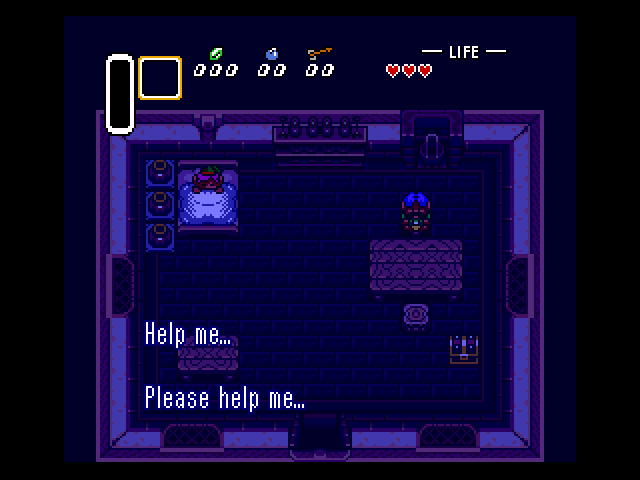
Unlike many of its successors, the opening of The Legend of Zelda: A Link to the Past is quick, right-to-the-point, and the action-packed. In the first scene, the hero Link hears the telepathic cries of the titular princess calling for help, telling him that she is a prisoner in her own castle and that her guards are under a magic spell from the evil wizard Agahnim. Link’s uncle attempts to save Zelda himself, brandishing his sword and shield and courageously marching through a thunderstorm to take on the soldiers holding the princess captive. Just a beat later, Link grabs his lamp, finds the secret entrance through the bushes into the castle, only to find his uncle fallen in battle. From there, he entrusts Link with his weapons to save Zelda.
Once fully armed, the hero must navigate through the labyrinthine halls of Hyrule Castle, fending off possessed soldiers and searching for keys to unlock Zelda from her prison. Once Link frees the princess, she shows him a secret passageway through the rat-infested sewers until ultimately they reach the sanctuary. Once Link and Zelda arrive in what appears to be the only safe space in all of Hyrule, the resident priest pledges to keep her safe there and tells the hero instantly that he must retrieve the Master Sword (!!!) in order to defeat Agahnim and restore peace to Hyrule. Once Link exits the sanctuary…BAM!!! THE LEGEND OF ZELDA THEME PLAYS FOR THE FIRST TIME IN THE GAME!
Sure, the story up to this point is fairly bare-bones, and the game takes a number of interesting detours after the initial fifteen minutes. Still, knowing in the first 30 seconds of the game how high the stakes would be is pretty jarring, and the thrill of besieging a fully manned castle alone with nothing but a small sword is tough to match. More importantly, A Link to the Past doesn’t force the player to sit through multiple cutscenes and boring tutorials; Link’s motivation from the get-go is abundantly clear, and he takes immediate, risky action. A Link to the Past has remarkable breadth and depth for a game from the early 1990s, but what makes it so great is how little of it feels like filler. In the first few minutes, you know what you need to do and how to do it.
PJ Manning — Sonic Adventure 2: Battle — City Escape
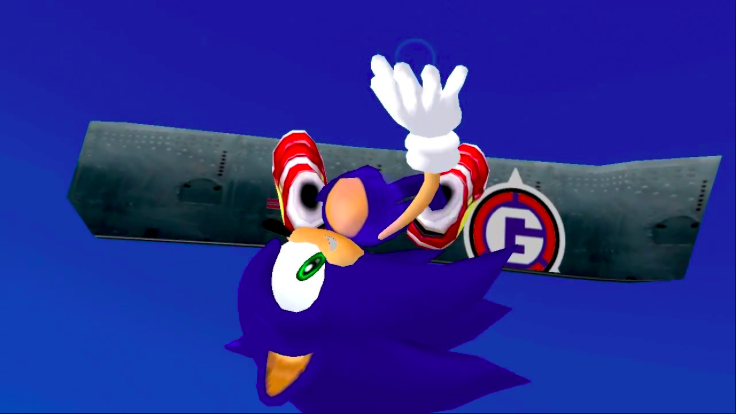
There’s no real reason to pick Battle over Sonic Adventure 2’s initial Dreamcast launch—but whether you played SA2 on Sega’s final console or Steam’s PC port, the thrill of snowboarding down a busy San Francisco-inspired street is undeniable. While 3D Sonic constantly disappointed many gamers since his 2006 release, SA2B exists somewhere between a delightful nostalgia trip and genuinely engaging game (so long as you cherry pick around the less-than-stellar mech levels). This is largely due to the impact of its opening stage.
Sonic never controlled so well. The actual level design of City Escape proved to be one of the game’s best, save for its final few space stages. It balances straight-forward mechanics (no timers, excessive rails, or gravity switches) with incredible speed—the purest 3D Sonic stage to date. The transition between downhill stretches, traditional platforming, set-piece loops, and bombing down the face of a building creates just enough diversity to keep the level fresh, while never feeling disjointed. Each transition flows together smoothly. The combat (typically a pain-point for the series) is just sparse enough to allow for fast-paced movement yet present in a way that breaks apart any potential monotony. But sharp level design only adds to the level’s biggest perk: that opening track.
Don’t get me wrong, the title track “Live and Learn” rocks; and while my personal favorite is the theme for Shadow’s White Jungle (“Rhythm and Balance”, as I am just now learning), I can’t help but rock out to “Escape from the City” as I type up this entry—let alone every time I (frequently) replay this opening level. Sega always billed Sonic as the edgy Mario, and no other song demonstrates this as strongly as City Escape’s rocking theme. It’s platforming with punk rock flair, the “Jeez Mom, get off my back” of level themes. But like the sharp level design, this mainly works to add yet another dimension to this phenomenal opening stage. City Escape acts as more than just my favorite Sonic level ever, but as one of my all time favorite stages in video game history. Its status as the opening level in Sonic Adventure 2 demands its inclusion on this list.

Oh yeah, there’s also that killer truck chase.
Anna Hickey — Journey — The Beginning (It’s really called that)

A close-up of sunlit sand, a shot of the small hill, gravestone-like monuments, a shooting star soaring over the desert, a cut to the face of the red-robed main character sitting down, and increasingly climactic music introduce you to That Game Company’s Journey. If you didn’t have a PS3 or a friend with one in 2012, you may have missed the heyday of this lovely indie game. But even if you retroactively go into Journey knowing nothing about it, the opening minutes of the game will give you just enough information and gameplay to enjoy the experience.
Journey is almost completely wordless. Visual points of interest fuel your curiosity to investigate them and, naturally, lead you to progress in the game. The very first thing most players will be drawn to investigate is a hill dotted by possible grave markers with red ribbons tied to them. Atop the hill, you will find the markers and a panned out shot showing a mountain in the background with a beacon of light at the top—the title shot punctuated by hauntingly beautiful music by Austin Wintory. This minute-long interaction of climbing a hill to reveal a mountain tells you everything you need to know about the game. Mainly, to get to the top of that glowing mountain—and that if you see something cool in the distance, you can probably discover something new by going to it. That’s the game in a nutshell.
Journey’s opening level does have tutorial elements, but they’re generally unintrusive. Opaque diagrams of the controller appear and disappear on screen at certain areas and the game never takes control away from you. Once you have a feel for the controls they can begin to explore the environment, which features a straight path forward or a side stop at a ruined structure to learn more about the world. This choice reinforces to players that their exploration will be rewarded. The opening area ends with a vision from the world’s predecessors and a long hallway, letting the you digest what you just saw in the cutscene.
I love the beginning of this game because I find almost everything – the music, the mechanics, the world, the story – is done just enough and not a bit more. This delicate balance fuels your curiosity, and so naturally guides you through the rest of Journey.
Geron Graham — Final Fantasy XV — Stand By Me
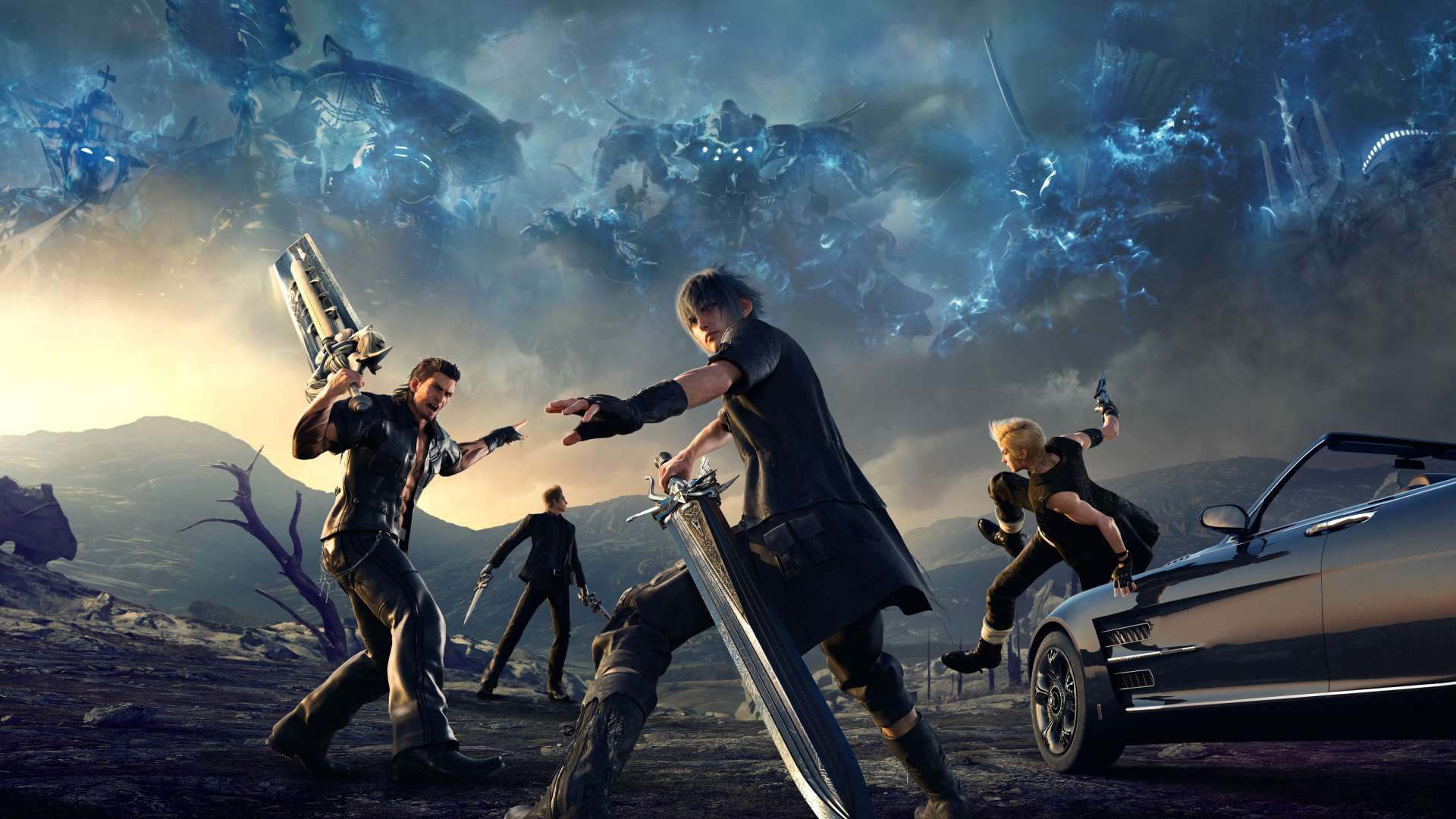
Final Fantasy XV is a special game. I could argue the merits of its masterful storytelling, satisfying combat, and inspiring character development all day long, but we’re here to talk about intro sequences, so let’s get to it.
In the opening moments of player control following the game’s brief prologue, we find our heroes—Noct, Gladiolus, Prompto, and Ignis—stranded in the desert. Their car, the Regalia, has broken down in the middle of the road not long after they set out from their homeland on a quest to unite Prince Noct with his soon-to-be wife, Lady Lunafreya.
Noct sits on the ground beside the car while Gladiolus tries in vain to wave down passing motorists. After realizing they won’t be able to hitch a ride, the four friends reluctantly begin pushing the car down the road, headed toward Hammerhead Station, a small service station a way down the road.
This is the point at which we are given control, tasked with fulfilling main protagonist Noct’s portion of the pushing responsibilities and moving the camera around to soak in the breathtaking desert views. We see powerlines, monstrous modern structures, wildlife, mesas, and other vehicles passing by.
As the car slowly rolls along, the characters playfully exchange banter. We don’t know any of them, but there is a clear sense that they know one another very well. A beautiful, familiar piano tune begins playing in the background. The tune is a modern rendition of Ben E. King’s classic “Stand By Me,” performed by Florence and the Machine. It’s magical.
A short time later, the scene ends. Noct mentions that “the world is a big ol’ place,” then the camera pans up and we briefly see that, indeed, it is very large.
I’m not usually one to get overly analytical about the machinations of scene development, but I cannot emphasize enough how impressive this scene is: it endears the player to the four friends almost immediately and conveys a great deal of information about the game and the world without ever beating the player over the head with anything.
For instance, when the car passes them without hesitation, we see that, despite being made up of a Prince and his royal guards, the game’s cast of heroes are not necessarily recognizable outside of their home. We won’t get far on reputation.
The body language and conversations of the characters tell us a great deal about their personalities and roles within the group. Noct speaks to his retinue with a casual equality and gripes about the effort of pushing the vehicle. He is a Prince, but he is not yet a leader and perhaps not convinced of the significance of his role.
Gladiolus attempts to flag down passing vehicles. He pushes from the Regalia from the back, putting in the most effort while reminding everyone else to keep pushing. His strength and determination drives the team forward. Prompto pushes from the side and keeps the mood light while Ignis, who’s very air indicates dignified intelligence, remains in the driver’s seat to steer.
As the camera is freed up and the music starts, we learn about the central themes of the game. The desert is scorching hot and massive, promising vast, mesmerizing lands to explore. This is a modern, open-world Final Fantasy, and what better way to convey that than opening with an airy, expansive desert full of motor vehicles and electricity and giant buildings?
The song, “Stand by Me,” is a staggeringly beautiful way to convey the importance of our heroes’ bonds with one another and to foreshadow the struggles they will face. Additionally, the cover is performed by a band which has experienced considerable success quite recently, which once again pushes the idea of modernity in a fantasy world.
I hope I’ve sold you on what an amazing opener FFXV presents us with. If you haven’t played the game yet, I can assure you that the rest of the game is as good or better than the opening scenes.
David Silbert — Grand Theft Auto IV — Arriving in Liberty City
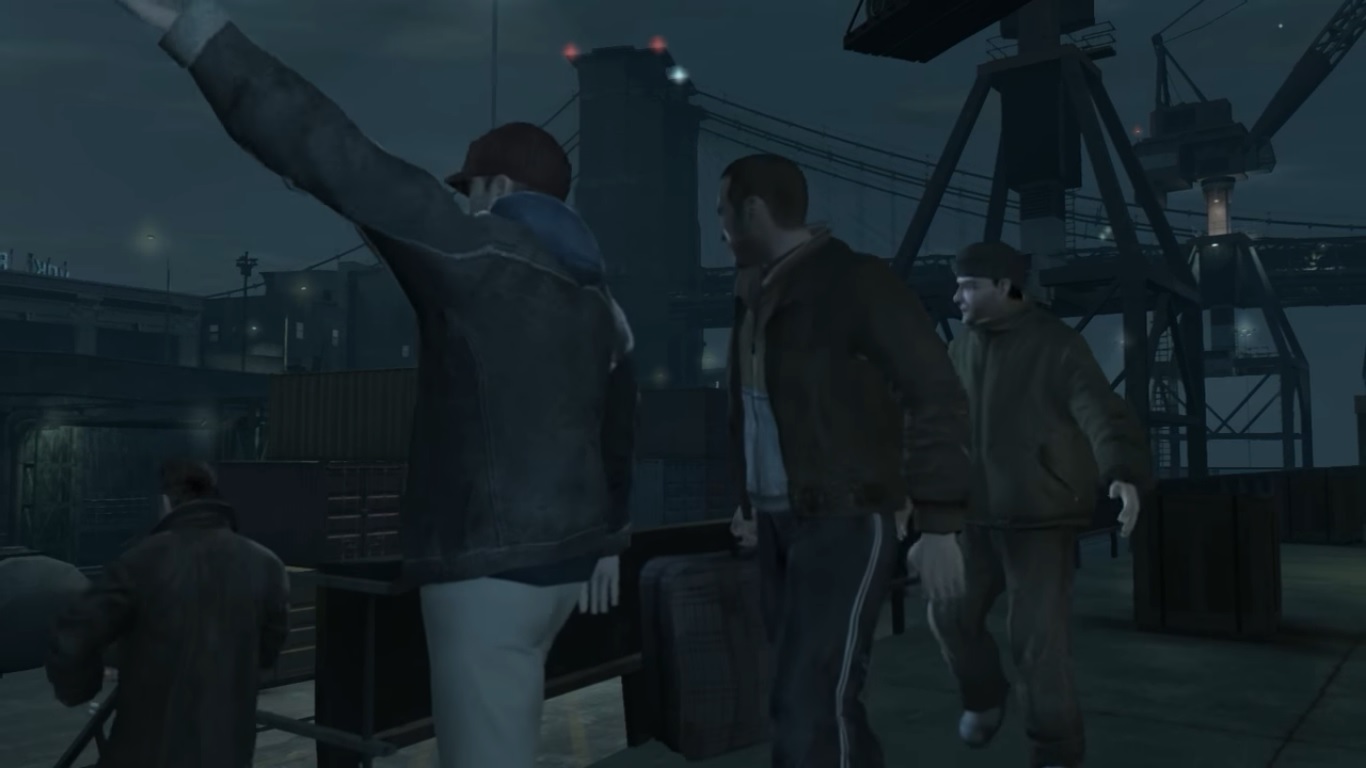
Grand Theft Auto IV’s opening isn’t the flashiest sequence in video games. There are no gunfights, no car chases, no police shootouts… In every conceivable way, this opening is the polar opposite of GTA V’s explosive introduction… and that’s why I love it so much.
While “Prologue,” the first level of GTA V, is a fantastic opening in its own right, it makes the assumption that players are familiar with the open-world formula its series popularized. The entire segment is linear, like something out of an Uncharted game. It takes place in the Midwest, far, far away from the city of Los Santos. The game knows people are expecting its open world, so it defies expectations by providing the most thrilling intro it can muster. The gravitas of these first few minutes, therefore, come from its massive set-piece moments, its adrenaline-fueled rush of excitement, and the debut of GTA V’s unique character-switching mechanic.
Grand Theft Auto IV offers players no such thrills. Its intro, titled “The Cousins Bellic,” begins with Niko Bellic and a diamond-smuggling ship docking at a grimy, secluded harbor at the edge of Liberty City. He and his Slavic friend share dreams of rising to a life of luxury and living the so-called “American Dream,” while the swells of a cello and thumps of a juicy bassline (“The Soviet Connection”) rock in the background.
Off the boat, Niko is quickly reunited with his cousin, Roman. As we drive to the cousin’s “mansion,” we take in Liberty City alongside Niko. We see the factories and warehouses that line the harbor, the distant skyline of bright lights and tall skyscrapers, the rows of townhouses that stretch out into the outskirts of Broker (real-life Brooklyn).
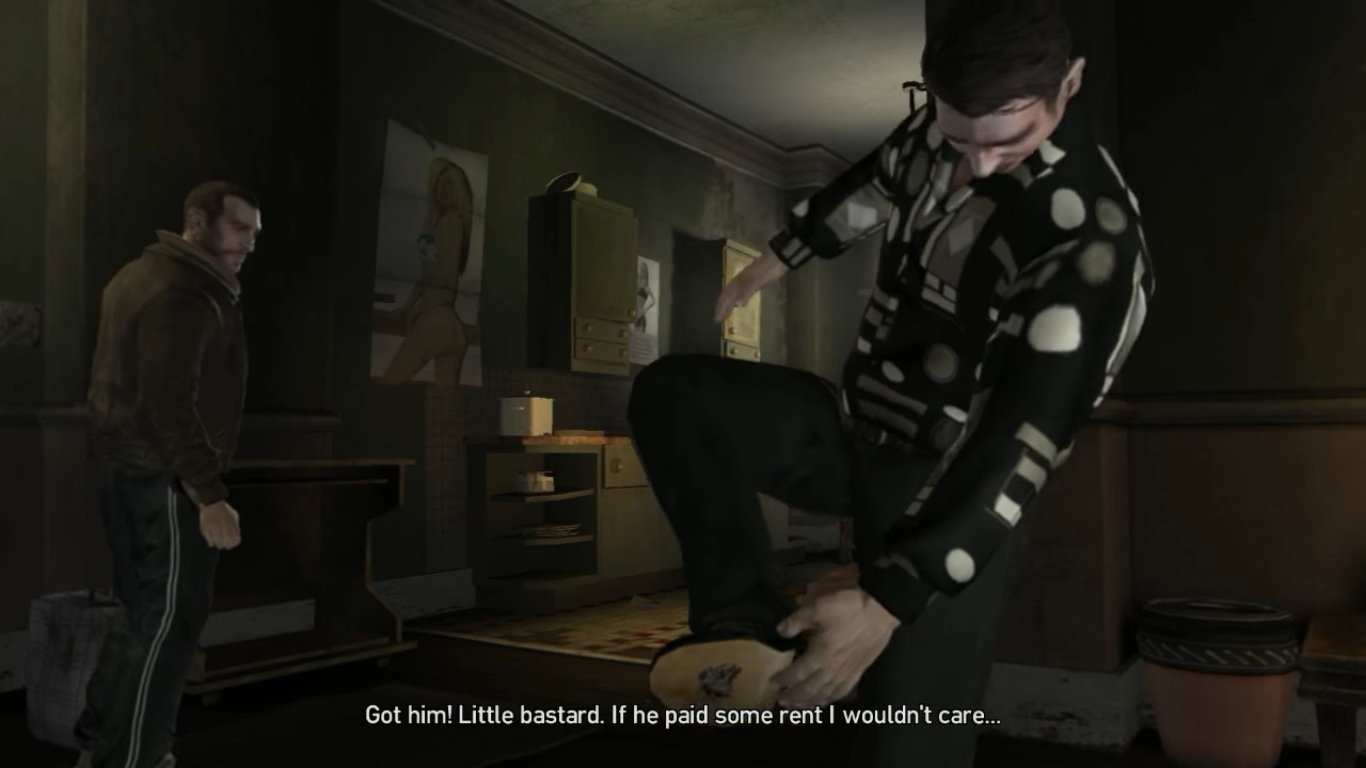
This juxtaposition of the “working class” here in Broker and the “upper class” just over the river in Algonquin (Manhattan) is both an inspiring and a depressing sight. Our feelings are soon validated as Niko pulls up to Roman’s abode to find it’s a filthy one-room apartment infested with cockroaches. As Roman’s lies shatter Niko’s illusion of America, Niko realizes that the “American Dream” is just that—a dream—and that the “Liberty” part of “Liberty City” is much further away than he had initially imagined.
The opening to GTA IV sets the rest of the game up beautifully while giving us a harsh reminder of the stark inequality that many in America (and across the world) face today.
Keisuke Isobe — Final Fantasy VI — Narshe
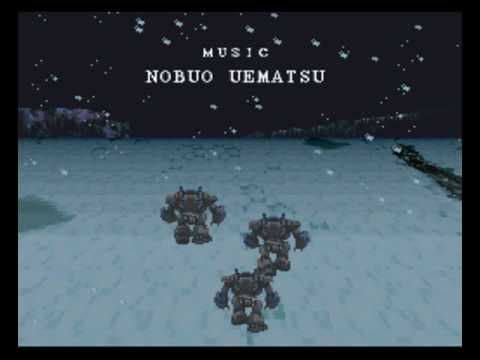
Final Fantasy VI’s opening crawl sets the tone for one of the greatest RPGs of all time. Somber and melancholy, it somehow represents a world on the verge of technological change through various locales in pixel art, a true showcase of how talented Square was back in the day. And with that perfect, sparsely worded open, we scroll and see Terra, Biggs, and Wedge in their Magitek armor. Their conversation about Terra strikes the perfect chord of unease, and as we switch from isometric to 3D and hear Terra’s Theme kick in as the soldier’s armor walks forward and the credits roll, chills will go down your spine. As we finally gain control of Terra for the first time, we walk through the village of Narshe, being challenged by inconsequential enemies, giving us a taste of the power of Terra, and Magitek.
Terra’s Theme might be my favorite track in all of gaming, in a way it’s very simple, but it never fails to fill me with emotion, and transport me back to the very beginning of FF6. Just hearing the songs make me want to boot up an emulator and play the game all over again, and knowing the personal journey Terra (alongside many others) goes through makes the opening and her theme song all the more meaningful.
Jack Linnehan — Uncharted 2: Among Thieves — A Rock and a Hard Place

“I did not tell half of what I saw for I knew I would not be believed…” – Marco Polo on his deathbed, 1324. Before we even begin to play the game, Uncharted 2 sets the tone of the game: there are things you will not believe unless you see them yourself. And boy, does the intro sequence pick up with that. We find our fearless hero Nathan Drake waking from a long slumber in a train car, bloodied and confused to his surroundings. As if that weren’t bad enough… the train is actually dangling in mid-air and he immediately falls out of it, barely clasping the end of the train car. The camera pans out to show the full train, barely resting on the side of a mountain, half of it ready to take the plunge downwards into the abyss. Welcome to Uncharted 2.
If you play the Uncharted series, you’re quite familiar with Nathan Drake somehow climbing his way out of disaster. But there’s something oh so harrowing, so breathtaking, as climbing vertically up a teetering train car, avoiding things falling literally on top of you, and trying to race against time as the train inches closer to fully falling off the cliff. And mind you, this is the beginning of the game. Finally, you reach the top. But oh, you’ve only just begun! Because we get introduced to cutscenes that will setup the rest of the story moving forward. Drake is off to find the lost city of Shambhala and the Cintamani stone, apparently hinted at by Marco Polo. He teams up with a former lover in Chloe Frazer, who by the way, is just phenomenal in every possible way. And as we weave in and out of cutscenes and Drake stumbling through a wintery wonderland of wreckage and rivals, the scene becomes set for the best game in the Uncharted franchise. The fact that it ends up resurfacing later in the game as the story reaches back chronologically is just the cherry on top.
While the intro sequence as a whole is phenomenal, what sets it apart is, without a doubt, the train climb. It’s such a daunting task to start a game with, not only from a playing sense, but just to get the atmosphere of the game set. It tells the player that the game is going to go so fast at such a high level of intensity, it might just go off the rails. Pun intended.
Genesis Sandoval — Batman: Arkham Asylum — Arkham Asylum
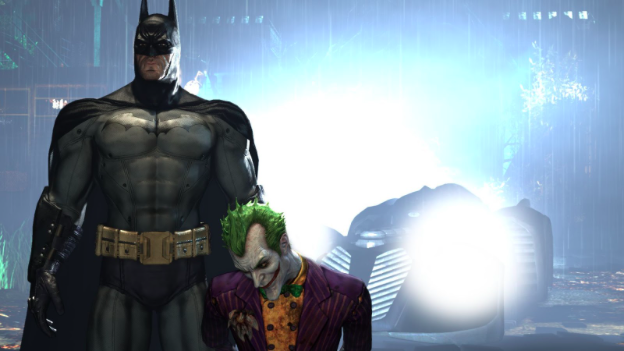
Batman: Arkham Asylum was a surprise for many. Before its initial release in 2009, many were not expecting it to be the critically acclaimed game it is today, but just from its opening sequence, players can already see how great the game was going to be.
The opening scene begins with a shot of the night sky as it rains, and a brief image of the Bat-Signal amongst the clouds. While a simplistic scene, and only a couple seconds long, this creates a dark atmosphere for the rest of the opening sequence. The scene continues with Batman speeding to Arkham Asylum with the Joker in the passenger seat of the Batmobile. Following this, the next cutscene takes the player inside Arkham Asylum where they are shown Batman, the Joker, and various guards going through the asylum. Through the use of bleak music, witty yet foreboding dialogue (done by phenomenal voice acting), and a visually dark ambience, the player knows something isn’t quite right. Even those who have played Arkham Asylum multiple times know this feeling all too well during this scene. The player is shown glimpses of Harley Quinn and are shown the Joker attacking the guards, albeit an underwhelming attack, and the player’s suspicions are confirmed. The opening sequence ends with the Joker running away before Batman can catch him, immediately putting the player into a fight with inmates in the asylum.
While the opening sequence of Arkham Asylum has little for the player to do except watch, the beauty of the cutscenes makes up for that. Not only is Arkham Asylum visually appealing, the voice acting is done well for every character the player interacts with in the game. The dialogue is funny, especially in the opening sequence while the Joker is talking, but knows not to overdo the humor aspects of the game.
I am not a huge fan of superheroes, of superhero games for that matter, but Arkham Asylum is worth the play no matter how much you enjoy superheroes or superhero games. The opening sequence of the game is what initially got me interested in the Batman: Arkham series, and even if you’re not going to play through the whole game or are on the fence of playing it, I’d highly recommend just watching the opening scene of Arkham Asylum. That scene shapes the rest of the game. I think that scene will make it very clear that anyone and everyone should play this game.
David Silbert — The Last of Us — The Outbreak
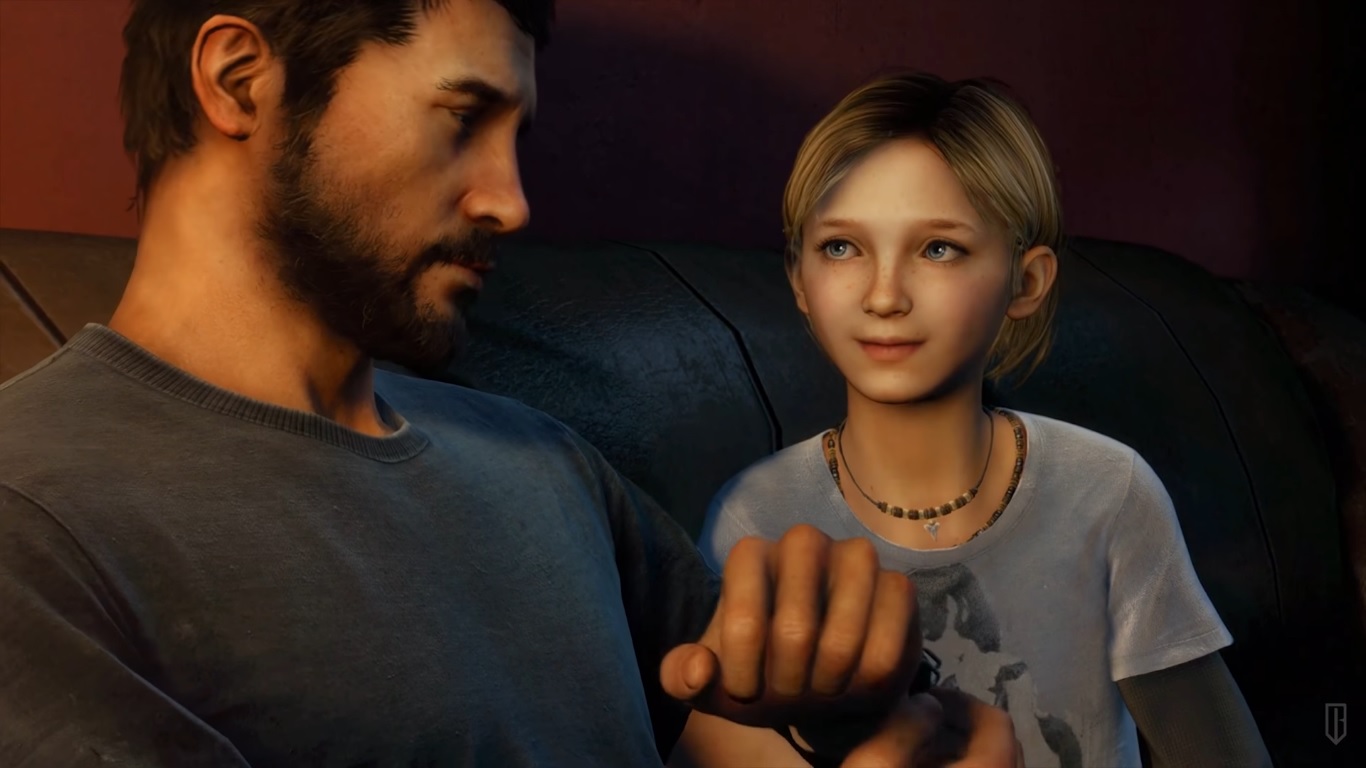
The Last of Us is a game filled with tense moments, pulse-pounding action, and terrible heartbreak. Yet despite how good the game is (and it is good), it is TLOU’s very first level that will forever stay in my mind—not just as a phenomenal opening sequence, but as one of the best sequences in gaming, period.
Right off the bat, The Last of Us plunges the player into a moment of conflict. Joel, the protagonist, comes home to his daughter Sarah while arguing with his brother Tommy about a job he’s afraid of losing. Though a subtle opening, actor Troy Baker delivers it with gravitas and weight; we barely know Joel, and yet we already feel for him.
In the course of a roughly two-minute cutscene, we’re introduced to Joel and Sarah’s father-daughter dynamic: one built upon love, firm parenting, and mocking the crap out of each other. Joel asserts that Sarah should be in bed, and Sarah gives a playful retort before giving him a birthday present in the form of a replacement wrist watch. Joel chimes right back by pretending the watch is broken, and Sarah jokes that she paid for it with “hardcore drugs.” By the time Joel takes Sarah up to her room to put her to sleep, it feels as if the two have been on-screen for an hour. In reality, barely two minutes have passed. And yet, again, we feel for these characters.
Fast forward a few hours, and Sarah is awoken to the sharp ring of a telephone. From the sound of her uncle Tommy’s voice on the other end, something serious has happened. As Sarah gets up to investigate, we are given control of her and make our first playable steps in-game. As we walk through the eerily quiet home, we pick up on certain details: a newspaper detailing a mysterious outbreak; a news station detailing a gas leak. Here, we see yet another example of Naughty Dog’s attention to detail in their games: when the gas ignites on the television, we feel the explosion erupt from outside Joel’s bedroom window.
Downstairs, we witness a frightened Joel enter the house from outside—a stark difference from the stressed and tired Joel that greeted us minutes before. It’s not long before we see him quickly load a pistol, hide his daughter behind him, and shoot his neighbor point blank in the face. Without a moment’s hesitation, Sarah and Joel head outside and file into Tommy’s sedan to make an escape from this mysterious outbreak.
Minutes go by as we drive by scared pedestrians, a burning farm, and a traffic jam leading out of town. As Joel and Tommy argue with each other about where to drive, we arrive at our tensest moment yet: an oncoming car that blindsides the sedan and causes the camera to cut to black. After scrambling to escape the overturned vehicle, we find ourselves in control of Joel for the very first time. Clutching his daughter in his hands for dear life, he and Tommy make the rest of the way out of town on foot, surrounded by terrified townspeople. Funneled by fire and burning cars down a side alleyway, Joel and Sarah eventually make it out into the countryside after Tommy holds back a group of the infected.
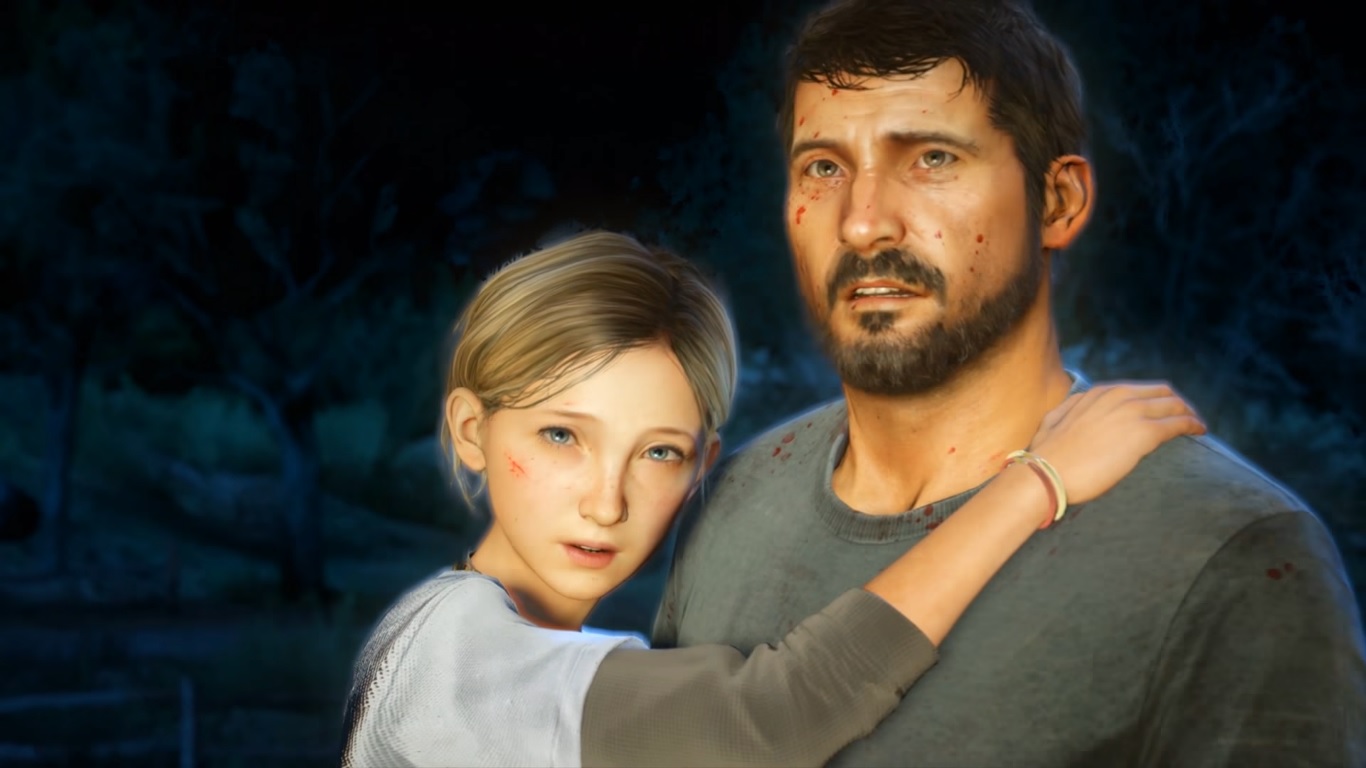
Running as far as his legs with take him, Joel is met with a moment of absolute tragedy. Stopped by an armed soldier, Joel cradles Sarah helplessly as the soldier is given the order to kill the two. While Tommy is able to save Joel’s life in time, Sarah takes several fatal shots, weeping before her last breath. As the scene nears an end, Troy Baker delivers a gut-wrenching performance as Joel, pleading, “Don’t do this to me, baby… Don’t do this to me, baby girl.”
Within the span of fifteen minutes, we are introduced to the characters of Joel and Sarah, develop a relationship with the two, and have that relationship shattered before our eyes. By the time the hardened, no-bullshit Joel utters his first line of The Last of Us’ main campaign, we know exactly who he is. We not only feel his bitterness—we understand it ourselves.
The Last of Us’ prologue offered us the ultimate introspection into its protagonist while simultaneously creating one of the tensest, saddest, and most horrific scenes in all of gaming.
How’d we do?
Intro sequences can be a total high-point for games. But as you may have guessed, every game has one. Let us know below what games we may have slept on. We do these “Best Of” articles monthly (we prefer the name Punished Favorites). I linked to our End Game conversation in the intro, but check out our list on the best video game soundtracks if you’re as musically inclined as me (hint: I discussed three separate songs in my entry, two of which had nothing to do with the level). Not your speed? How about the best video game merchants of all time?
Otherwise, we have great entries on speedrunning, absurdly long lists (one of which ranked literally every single character in Breath of the Wild), and excellent thought pieces, like preemptively complaining about the problems with Pokemon: Let’s Go, Pikachu and Eevee.
It’s not all serious here. We do have satire pieces on the problem with video game butts or ranking every Zelda dungeon (based solely on number of small keys).
Thanks for checking us out. Hope to see you in the future!


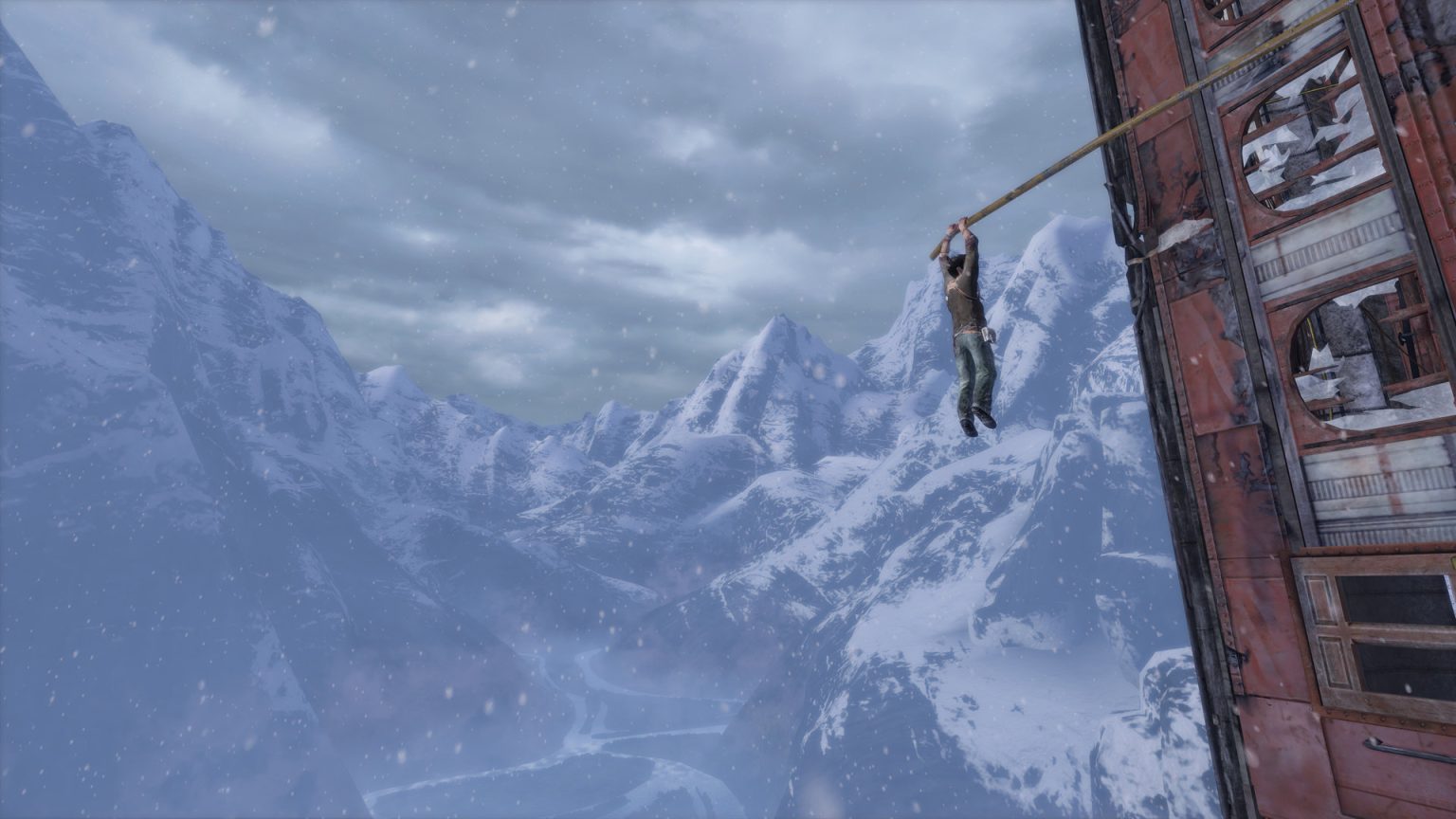











































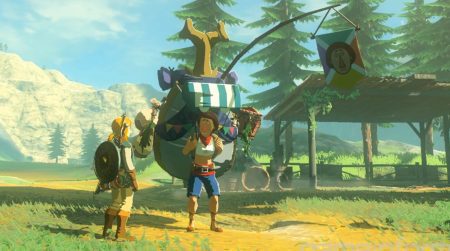

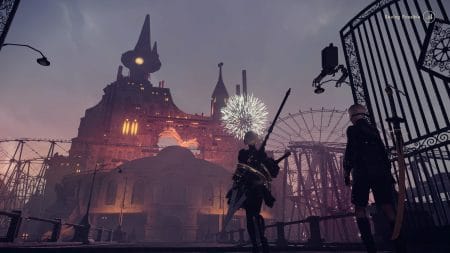
1 Comment
Uncharted 2’s opening is also a literal ‘cliffhanger’, the name of the device to sustain interest in a reader or viewer to experience the next installment of a book serialization or TV show.